| Photo of the month – November 2021 |
[German version] |
The facts direct from Belgium:
The facts direct from Belgium:
- Groupage freight
- 10 tonnes of cargo as per CMR consignment note
- Not secured in any way
- The topmost pallet and the steel on it worked loose
- Vehicle tilted by approx 12 cm
- Tarpaulin on the right was at risk of tearing
- Driver forbidden to continue the journey
Fine as per new decree (national implementation of 2014/47/EU – Roadside Inspection): € 1000
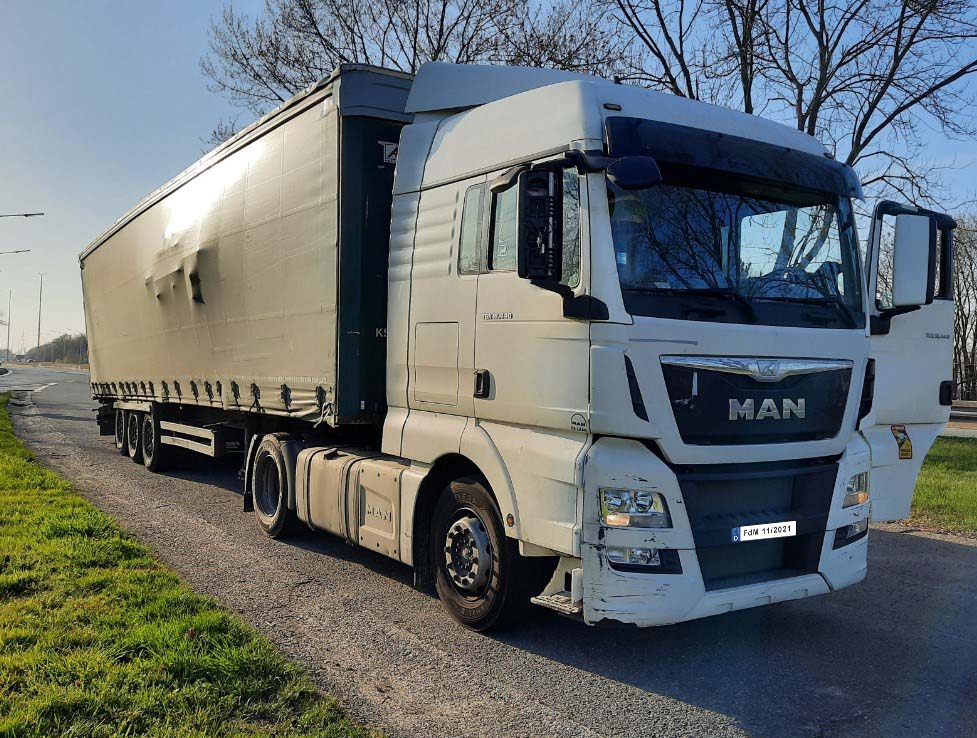
Figure 1 [Raymond Lausberg]
A bulge as irregular as this one will always attract the attention of third parties, as it suggests that trouble is brewing.
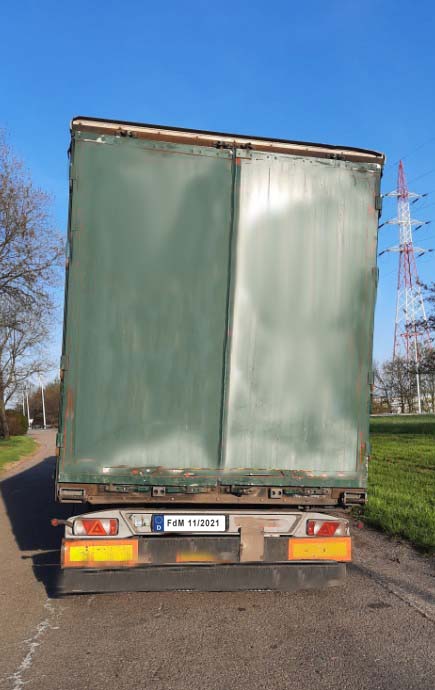
Figure 2 [Raymond Lausberg]
And the angle of the vehicle also reveals that something that was not intended by those involved must have been going on inside.
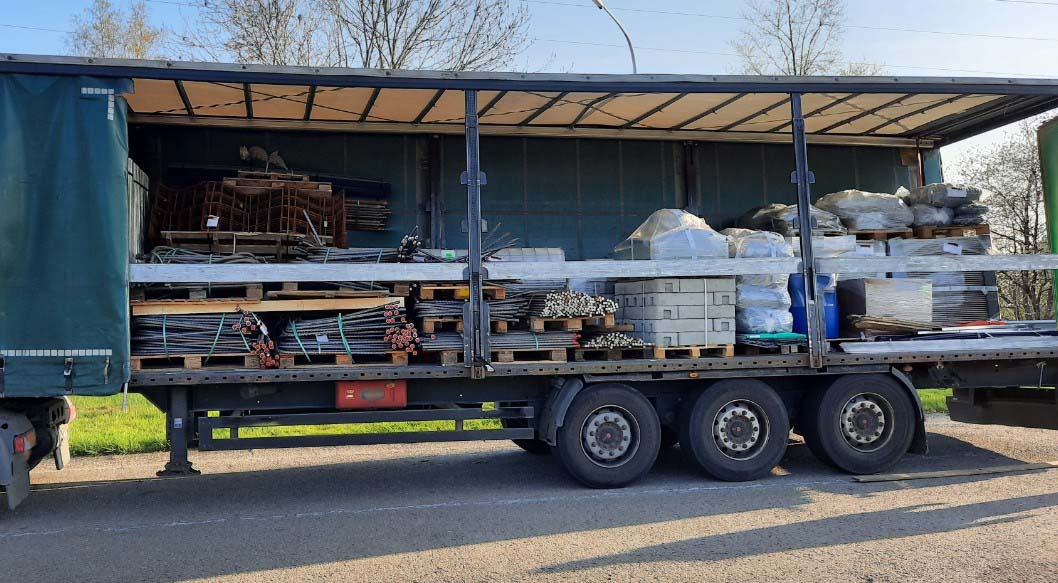
Figure 3 [Raymond Lausberg]
The side view then reveals the facts of the matter:
- Load securing to the front … absent
- Load securing to the side … absent
- Cargo loaded in a way that would have made it possible to secure it … no evidence
- Load securing where it would have been possible … absent
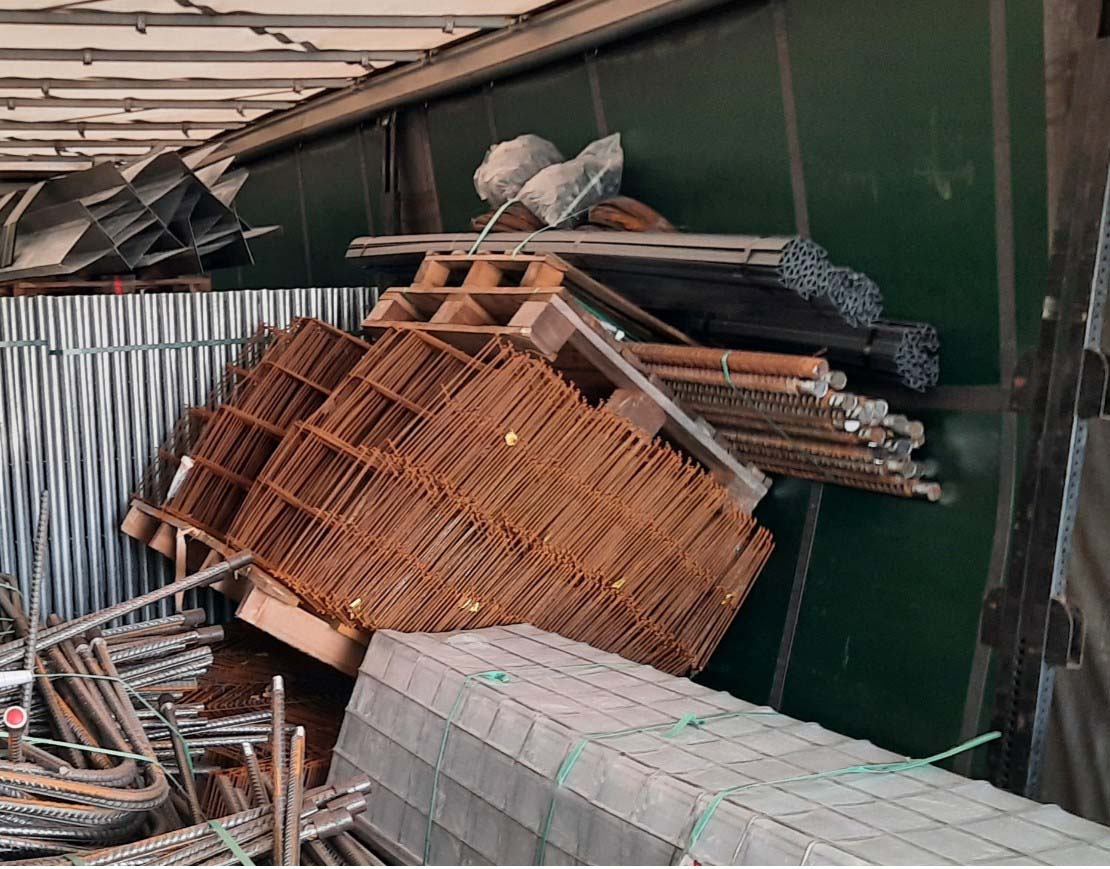
Figure 4 [Raymond Lausberg]
The load was clearly stacked and secured using the legendary “skyhooks”. The whole thing is more reminiscent of a house of cards than of safe loading. Such mindlessness is quite staggering. We can only hope that the loader who "helped" to perpetrate such a crime has also received his share of the punishment.
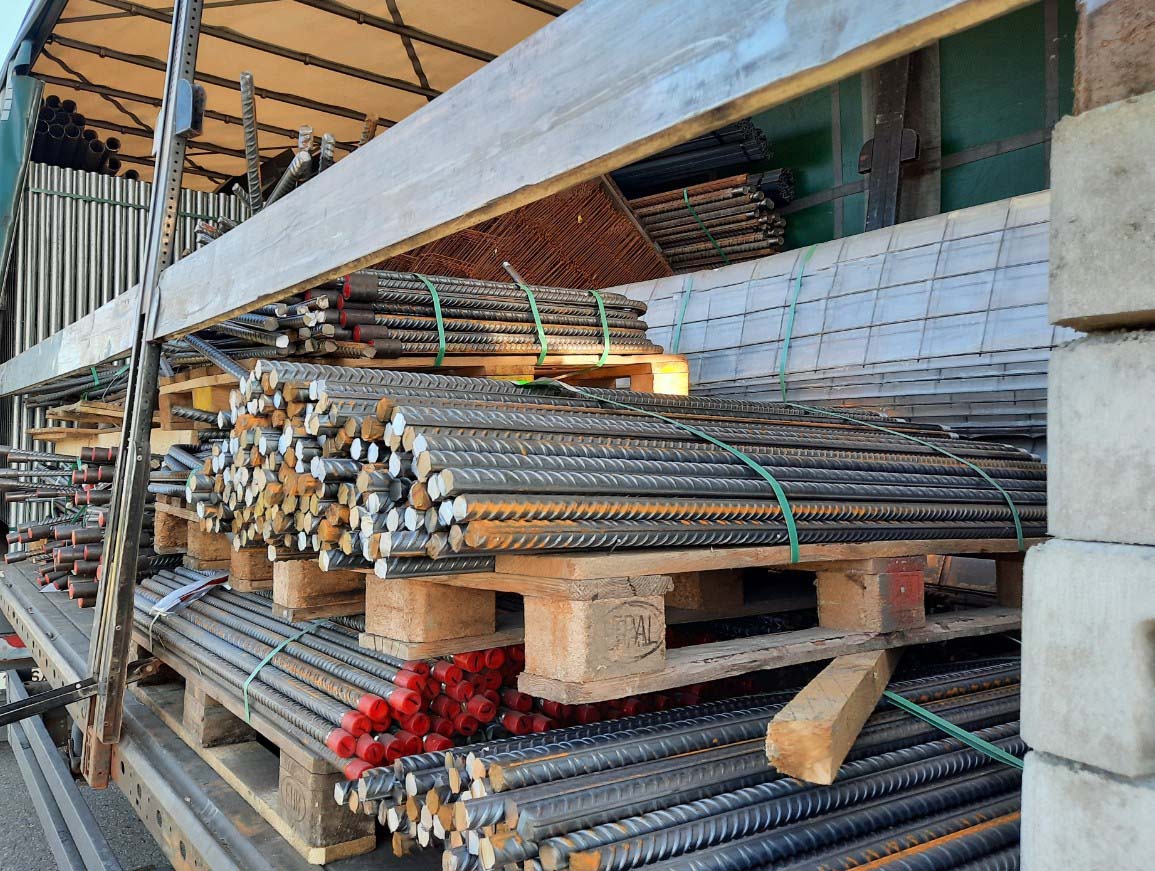
Figure 5 [Raymond Lausberg]
This is simply chaotic rather than a serious attempt to load the cargo properly.
What would we need to do?
- If loads are to be stacked, they must be suitable for that purpose. And if that is not the case, measures must be taken to make the load stackable. To some extent, we can see this in the foreground, where a piece of squared lumber has been placed underneath to compensate for the different heights. The aim must always be to create a “new” load-bearing surface so that the next load unit can be positioned safely on top of it.
- Careful thought must be given to friction chains in such stacks, but some of them are unclear. Loads that are not inherently stable in terms of friction cannot be made to transmit friction reliably, even if anti-slip material is used. Such as the steel bars that can be seen in this photo. The plastic straps may just prevent them from rolling sideways off the pallet, but even that is not certain if they are subjected to a load. Friction is not reliably transmitted through this somewhat loose bundle.
- Loading pallets of steel bars like this sideways is simply unsafe because, despite the fact that they have a profile, there is no guarantee that no steel bar can break free from the rather loose bundle. These could penetrate the tarpaulin. Furthermore, the entire pallet cannot be secured like this: it has to be rotated by 90°.
- If pallets like this are to be loaded safely, it is best to work with a tight fit to the front. This could be achieved by compact loading, for instance.
- We would place squared lumber between the layers across the entire width of the vehicle in order to create a stable second and third level. On these levels, such loads can be secured with loop lashings. Any differences in height must be compensated for. If this is not possible, the next level cannot be loaded.
- The loader must give a great deal of thought to how the load units are formed. Ideally, the load units should be easy to stack. The worse the load units are formed, the greater the effort required for loading and securing, to the extent that only a limited quantity of cargo can be transported, which is not in the interests of those involved.
- The load shown in Figure 4 is entirely unsecured and the “load units” are simply disastrous. They are not capable of being stacked, they are overhanging on two sides and the load itself is inadequately secured on the pallet.
- It is not the responsibility of the driver alone to iron out the inadequacies of the shipper or their dispatch department. Professional drivers are in short supply, and those responsible for loading should not make their work even more difficult.
Your load securing columnists wish you a safe and secure autumn.
Back to beginning
